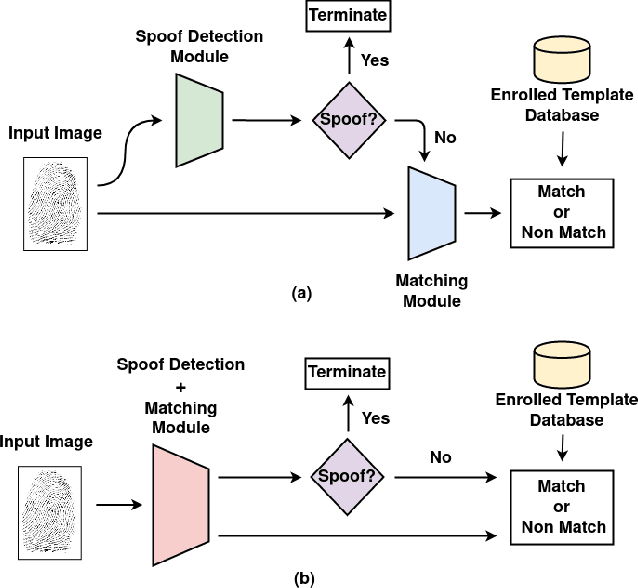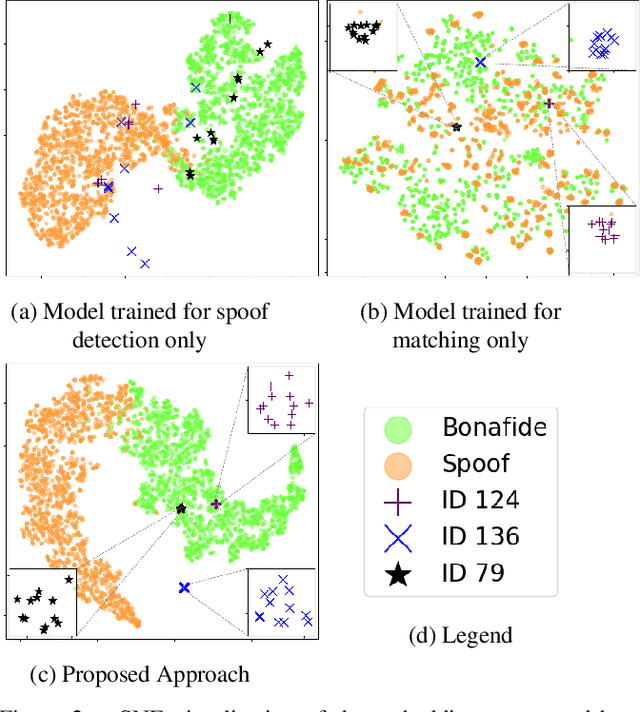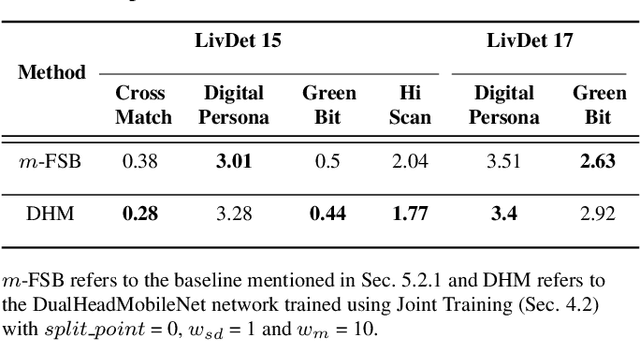Saraansh Tandon
Transformer based Fingerprint Feature Extraction
Sep 08, 2022



Abstract:Fingerprint feature extraction is a task that is solved using either a global or a local representation. State-of-the-art global approaches use heavy deep learning models to process the full fingerprint image at once, which makes the corresponding approach memory intensive. On the other hand, local approaches involve minutiae based patch extraction, multiple feature extraction steps and an expensive matching stage, which make the corresponding approach time intensive. However, both these approaches provide useful and sometimes exclusive insights for solving the problem. Using both approaches together for extracting fingerprint representations is semantically useful but quite inefficient. Our convolutional transformer based approach with an in-built minutiae extractor provides a time and memory efficient solution to extract a global as well as a local representation of the fingerprint. The use of these representations along with a smart matching process gives us state-of-the-art performance across multiple databases. The project page can be found at https://saraansh1999.github.io/global-plus-local-fp-transformer.
Learning Fashion Compatibility from In-the-wild Images
Jun 13, 2022



Abstract:Complementary fashion recommendation aims at identifying items from different categories (e.g. shirt, footwear, etc.) that "go well together" as an outfit. Most existing approaches learn representation for this task using labeled outfit datasets containing manually curated compatible item combinations. In this work, we propose to learn representations for compatibility prediction from in-the-wild street fashion images through self-supervised learning by leveraging the fact that people often wear compatible outfits. Our pretext task is formulated such that the representations of different items worn by the same person are closer compared to those worn by other people. Additionally, to reduce the domain gap between in-the-wild and catalog images during inference, we introduce an adversarial loss that minimizes the difference in feature distribution between the two domains. We conduct our experiments on two popular fashion compatibility benchmarks - Polyvore and Polyvore-Disjoint outfits, and outperform existing self-supervised approaches, particularly significant in cross-dataset setting where training and testing images are from different sources.
A Unified Model for Fingerprint Authentication and Presentation Attack Detection
Apr 07, 2021



Abstract:Typical fingerprint recognition systems are comprised of a spoof detection module and a subsequent recognition module, running one after the other. In this paper, we reformulate the workings of a typical fingerprint recognition system. In particular, we posit that both spoof detection and fingerprint recognition are correlated tasks. Therefore, rather than performing the two tasks separately, we propose a joint model for spoof detection and matching to simultaneously perform both tasks without compromising the accuracy of either task. We demonstrate the capability of our joint model to obtain an authentication accuracy (1:1 matching) of TAR = 100% @ FAR = 0.1% on the FVC 2006 DB2A dataset while achieving a spoof detection ACE of 1.44% on the LiveDet 2015 dataset, both maintaining the performance of stand-alone methods. In practice, this reduces the time and memory requirements of the fingerprint recognition system by 50% and 40%, respectively; a significant advantage for recognition systems running on resource-constrained devices and communication channels.
 Add to Chrome
Add to Chrome Add to Firefox
Add to Firefox Add to Edge
Add to Edge